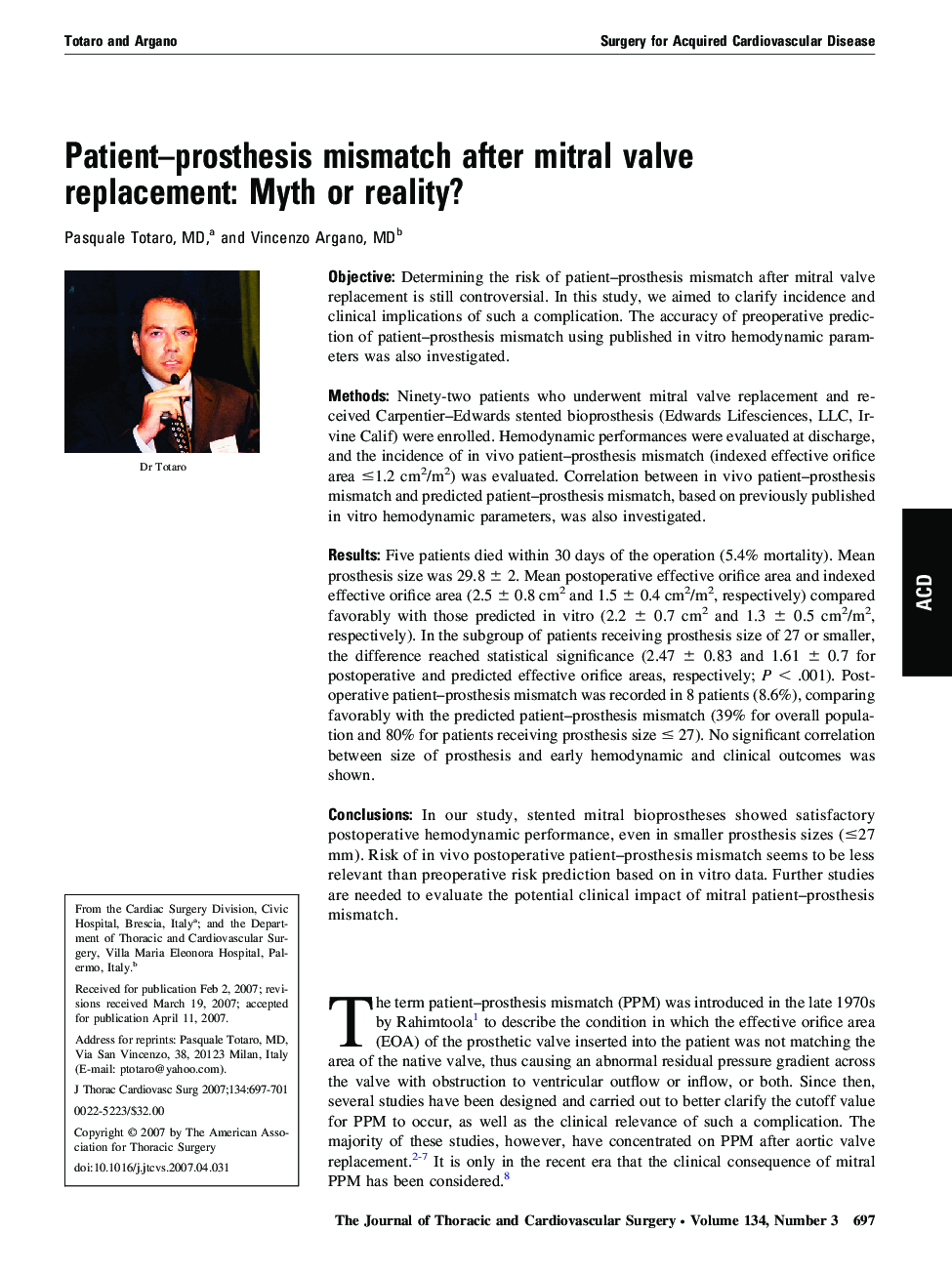| Article ID | Journal | Published Year | Pages | File Type |
|---|---|---|---|---|
| 2985658 | The Journal of Thoracic and Cardiovascular Surgery | 2007 | 5 Pages |
ObjectiveDetermining the risk of patient–prosthesis mismatch after mitral valve replacement is still controversial. In this study, we aimed to clarify incidence and clinical implications of such a complication. The accuracy of preoperative prediction of patient–prosthesis mismatch using published in vitro hemodynamic parameters was also investigated.MethodsNinety-two patients who underwent mitral valve replacement and received Carpentier–Edwards stented bioprosthesis (Edwards Lifesciences, LLC, Irvine Calif) were enrolled. Hemodynamic performances were evaluated at discharge, and the incidence of in vivo patient–prosthesis mismatch (indexed effective orifice area ≤1.2 cm2/m2) was evaluated. Correlation between in vivo patient–prosthesis mismatch and predicted patient–prosthesis mismatch, based on previously published in vitro hemodynamic parameters, was also investigated.ResultsFive patients died within 30 days of the operation (5.4% mortality). Mean prosthesis size was 29.8 ± 2. Mean postoperative effective orifice area and indexed effective orifice area (2.5 ± 0.8 cm2 and 1.5 ± 0.4 cm2/m2, respectively) compared favorably with those predicted in vitro (2.2 ± 0.7 cm2 and 1.3 ± 0.5 cm2/m2, respectively). In the subgroup of patients receiving prosthesis size of 27 or smaller, the difference reached statistical significance (2.47 ± 0.83 and 1.61 ± 0.7 for postoperative and predicted effective orifice areas, respectively; P < .001). Postoperative patient–prosthesis mismatch was recorded in 8 patients (8.6%), comparing favorably with the predicted patient–prosthesis mismatch (39% for overall population and 80% for patients receiving prosthesis size ≤ 27). No significant correlation between size of prosthesis and early hemodynamic and clinical outcomes was shown.ConclusionsIn our study, stented mitral bioprostheses showed satisfactory postoperative hemodynamic performance, even in smaller prosthesis sizes (≤27 mm). Risk of in vivo postoperative patient–prosthesis mismatch seems to be less relevant than preoperative risk prediction based on in vitro data. Further studies are needed to evaluate the potential clinical impact of mitral patient–prosthesis mismatch.
